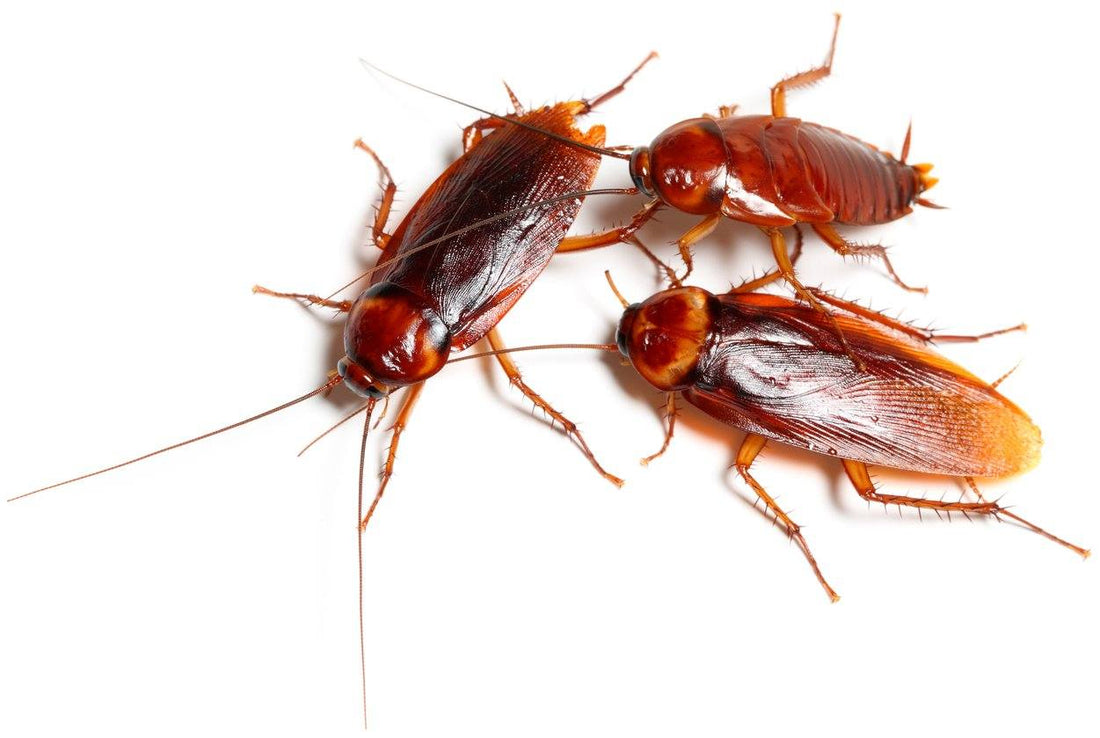Red runner roaches are also known as Rusty Reds and Turkestan Roaches. Although they’re a pest species in the southwest USA, Middle East, and central Asia, they are also a common feeder insect for exotic pets, and make a quiet alternative to crickets. If you want to raise them as feeders, there’s an important question that needs to be answered: what do red runner roaches eat?
What Red Runner Roaches Eat in the Wild
Not much is known about red runner roaches in the wild. We know that they originated in the Middle East and central Asia, and that they have become an invasive species in the southwestern USA. We know that they are frequently found near human dwellings, and prefer dark, warm, damp habitats.
We can assume that, like other cockroaches, red runner roaches are scavengers and play a detritivore role in their local ecosystem by consuming and breaking down organic waste.
How to Feed Your Red Runner Roaches
Growth & Breeding
People often keep a colony of red runners as an alternative to crickets. If you want to breed your own red runner roaches as feeders, keep in mind that you will need to take precautions against allergies.
Red runner roaches can survive on just about anything, and keeping them well fed is more or less the same as the approach you use for gutloading. But to promote optimal growth, reproduction, and nutrition, here are a few tips for success:
- Provide plenty of protein. Keep it less than 40% dry matter basis, but grains, high quality rat chow, dog kibble, and fish flakes make useful, protein-packed additions to the diet.
- Offer a variety of foods to encourage self-selective nutrition.
- Don’t offer more than the roaches can eat in a 24-36 hour period.
Gutloading
The food that you give to your feeders directly affects the quality of nutrition that your pet reptile will end up receiving. For example, starved and dehydrated feeder insects are less nutritious than those raised on a low-quality diet, and those are less nutritious than feeder insects raised on a high-quality, well thought-out diet.
The strategy of feeding insects to maximize their ultimate nutritional value is called gutloading. Red runner roaches can be gutloaded in more or less the same way as dubia roaches. Although they need plenty of protein for successful breeding and rapid growth, the roaches that you intend to feed to your pet reptile, amphibian, or invertebrate should have a low protein diet (less than 20% dry matter basis). A high-protein gutload often creates an excessively high-protein feeder, which can lead to excess protein consumption for reptiles and the development of gout. Gout is a very painful disease where a reptile’s kidneys lose the ability to process protein properly, resulting in uric acid crystals getting deposited in the joints.
Here is a list of foods that you can use to gutload red runner roaches:
- Dubia Diet
- Apples
- Alfalfa
- Arugula
- Bananas
- Beets
- Bee pollen
- Berries
- Broccoli
- Carrots
- Collared greens
- Dandelion greens/flowers
- Hibiscus greens/flowers
- Kale
- Spinach
- Spring mix
- Squash
- Sweet potatoes
- Zucchini
As with your pet reptile, it’s best to offer a variety of high-quality foods to your red runners. This creates a more balanced diet for the roaches since they tend to self-select for nutrition. In other words, they eat what they need when they need it. And of course, avoid using any produce that may have pesticide residues.
If you have just purchased your feeder roaches, make sure to gutload them for at least 48 hours (preferably longer) before offering them to your pet.
Do Red Runner Roaches Need Water?
Like other roaches, red runner roaches get most of their water from the food that they eat. Keeping them in a high-humidity environment also helps keep them hydrated. Well-hydrated feeders are healthier, and help promote well-hydrated reptiles, which can help lower the risk of food- and substrate-related impaction.
You can provide water to red runner roaches by making sure they have a steady supply of moisture-rich fruits and vegetables, or you can use an artificial method like water gel crystals or a water-soaked cotton ball. If using the cotton ball, make sure to replace it daily to prevent bacterial growth. Avoid using a water dish, as you may end up with drowned roaches.











